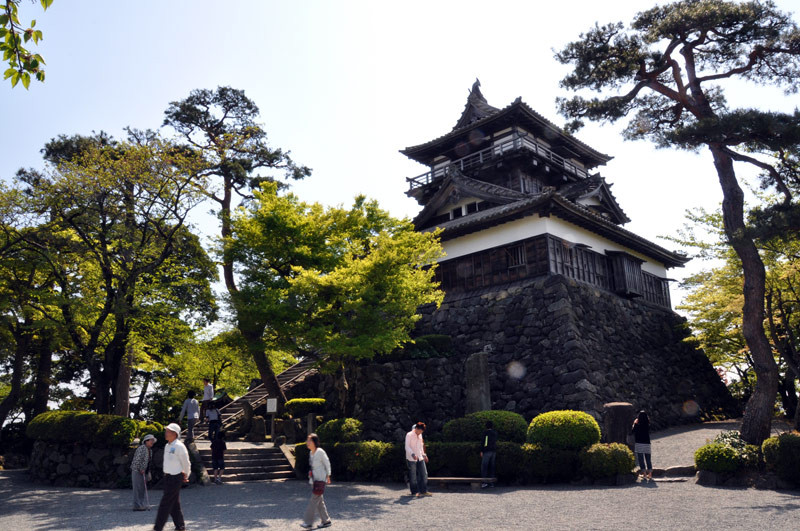Maruoka Castle
The oldest castle keep in Japan
Maruoka Castle was built in 1576, when Oda Nobunaga, one of Japan's 'Three Great Unifiers,' awarded the territory then known as Echizen to Shibata Katsutoyo. 400 years later, standing atop a lovely wooded hill in what is now Sakai City in Fukui Prefecture, only the castle’s small central keep, or tenshu, still remains.
Maruoka Castle has Japan's oldest castle keep, but it is not the nation's oldest castle. Inuyama Castle in Aichi Prefecture actually predates Maruoka by thirty-nine years, but while Inuyama's surrounding structures date back to 1537, its central keep was only completed in 1620, thus allowing Maruoka Castle to retain its limited title.
Sitting atop a 6.2-meter (20 ft 4 in) stone platform set among Japanese black pine and cherry trees, the miniscule castle keep is almost cottage-like in appearance, with a long staircase leading directly into its black wooden interior. Inside, two sets of ladder-like steps lead up to the third-story watchtower, which offers a clear view across the broad surrounding plain and the nearby hills.
Maruoka Castle is unique in that, rather than employing the usual ceramic shingles, its shingles are made of a local stone called Shakudani, which may have contributed to its collapse during an earthquake in 1948. The castle keep was reconstructed in 1955 using 80% of the original materials, but the castle was downgraded from ‘National Treasure’ status to a mere ‘Important Cultural Property.’
Maruoka Castle is also known as Kasumi-ga-jō, or ‘Mist castle.’ The name originates from a legend that a serpent once appeared to blow a mist over the castle to conceal it from enemies. The castle is now located on the edge of Kasumi-ga-jō Park, and with 400 cherry trees on the premises, the area is counted among the 100 best sites for cherry blossom viewing in the country.
Maruoka Castle is open daily from 8:30 a.m. to 5:00 p.m. Admission is ¥300, and includes access to a small museum located in the carefully-maintained garden at the base of the hill. It can be accessed by hourly buses from Awara-onsen Station or Fukui Station.
| Fukui Tourism: | www.fuku-e.com |
| Japanese Castles: | www.jcastle.info |
Also in the Area
Published August 2010. Photo © 2010 Michael Kanert.



